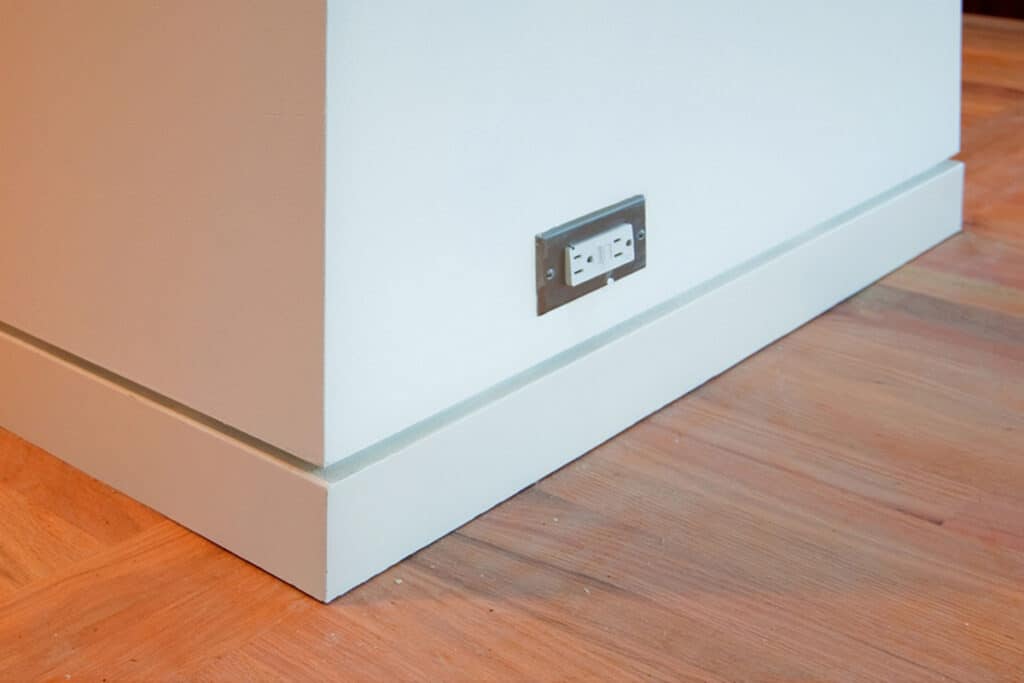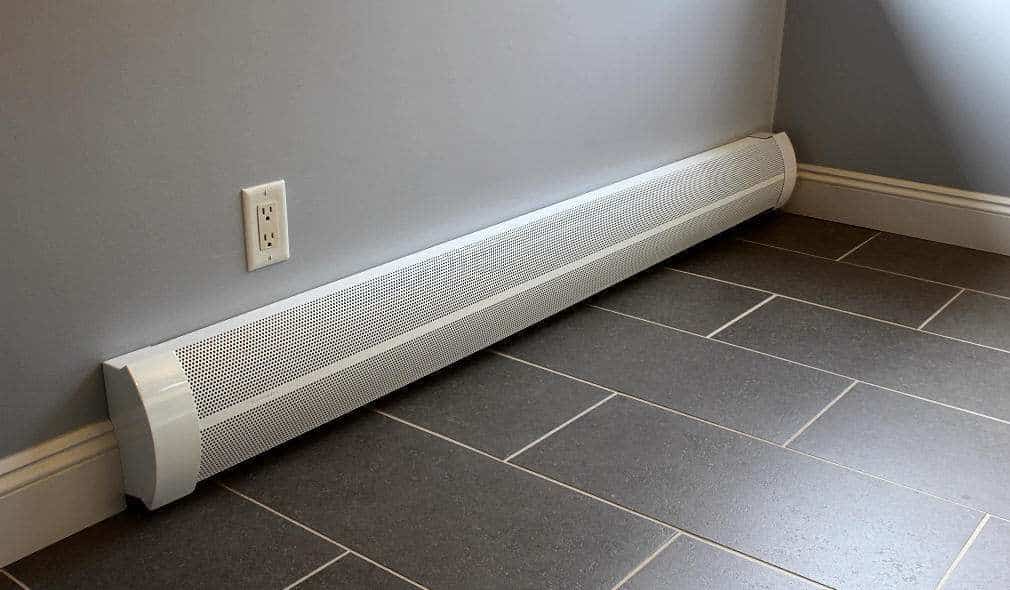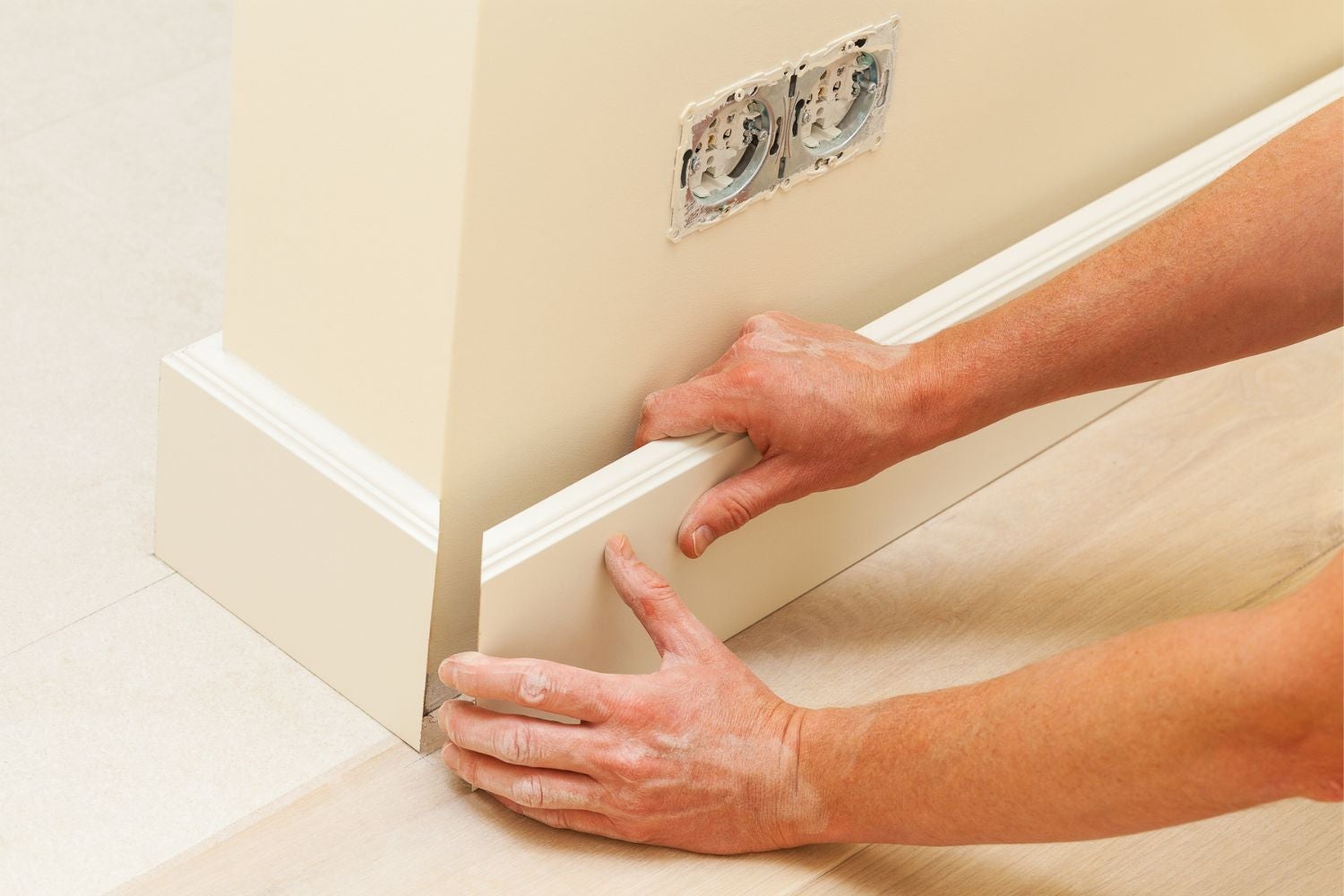How Does Baseboard Heat Work
Introduction
How Does Baseboard Heat Work: Baseboard heating is a popular and efficient method of heating homes and buildings. It is a type of heating system that uses electric or hydronic baseboard heaters to distribute heat throughout a space. This type of heating is commonly found in older homes and apartments, but it can also be installed in new construction or as a supplemental heating source.
Electric baseboard heaters work by using electricity to heat metal fins or coils that are located inside the unit. As the air in the room passes over these heated elements, it warms up and circulates throughout the space. The heat is radiated from the unit and warms the surrounding area, providing a comfortable and consistent temperature.
Hydronic clean baseboard heaters, on the other hand, use hot water or steam to heat the metal fins or coils. A boiler or water heater is used to heat the water, which is then circulated through the baseboard unit via pipes. As the hot water or steam passes through the unit, it heats up the metal fins or coils, and the heat is radiated into the room.
One of the advantages of baseboard heating is its ability to provide zoned heating. Each baseboard unit can be controlled individually, allowing for different temperatures in different rooms or areas of a building. This can help to save energy and reduce heating costs, as rooms that are not in use can be kept at a lower temperature.

What is the downside of baseboard heating?
Baseboard heating is a popular heating option in many homes, especially in colder climates. It involves the use of electric or hydronic baseboard heaters that are installed along the baseboards of a room. While baseboard heating has its advantages, such as providing consistent heat and being relatively easy to install, there are also some downsides to consider.
One of the main downsides of baseboard heating is its inefficiency. Baseboard heaters work by radiating heat into a room, which can be a slow and inefficient process. Unlike forced-air systems, which distribute heat quickly and evenly throughout a space, baseboard heaters take longer to warm up a room and may not provide consistent heat throughout the entire space. This can result in certain areas of a room being warmer or cooler than others, leading to discomfort for occupants.
Another downside of baseboard heating is its reliance on electricity. Electric baseboard heaters can be expensive to operate, especially in areas with high electricity rates. They can also contribute to higher energy bills, particularly if they are used as the primary source of heating in a home. Additionally, electric baseboard heaters can be a fire hazard if not properly maintained or if flammable materials are placed too close to them.
Hydronic baseboard heaters, on the other hand, use hot water or steam to provide heat. While they are generally more energy-efficient than electric baseboard heaters, they can still be costly to install and maintain. Hydronic baseboard heaters require a boiler or water heater to heat the water or steam, which can add to the overall cost of the system. They also require regular maintenance to prevent leaks or other issues.
Does baseboard heat use a lot of electricity?
Baseboard heat is a common heating system found in many homes. It consists of electric heating elements installed along the baseboards of a room, which radiate heat into the space. One of the concerns homeowners often have is whether baseboard heat uses a lot of electricity. The answer to this question depends on several factors, including the size of the room, insulation, and the temperature settings.
Size of the room:
The size of the room plays a significant role in determining the amount of electricity baseboard heat will consume. Larger rooms require more heat to maintain a comfortable temperature, which means the heating elements will need to work harder and use more electricity. On the other hand, smaller rooms will require less heat and, therefore, use less electricity.
Insulation:
The level of insulation in a room can greatly impact the efficiency of baseboard heat. Well-insulated rooms will retain heat better, allowing the heating elements to cycle on and off less frequently. This results in lower electricity usage. Conversely, poorly insulated rooms will lose heat more quickly, causing the heating elements to run more often and consume more electricity.
Temperature settings:
The temperature settings on the baseboard heat system also affect electricity usage. Higher temperature settings will require the heating elements to work harder and use more electricity. Lower temperature settings, on the other hand, will use less electricity but may not provide sufficient warmth in colder climates.
It is important to note that baseboard heat is generally considered to be an efficient heating system. Unlike forced-air systems, which can lose heat through ductwork, baseboard heat directly radiates heat into the room. This means there is less heat loss and, therefore, less wasted energy. Additionally, baseboard heat allows for individual temperature control in each room, which can further contribute to energy savings.
How effective is baseboard heating?
Baseboard heating is used in a lot of homes, but does it work? Electric or hydronic baseboard heaters are used in this heating method. Heaters in rooms make the temperature comfortable. How well baseboard heating works depends on a lot of things.
How well baseboard heating works depends on how well the room is insulated. In rooms that aren’t well insulated, baseboard heater heat can leave through the walls, windows, and doors. It is possible for heaters to work less well and energy costs to go up. Rooms with good insulation keep heat in and make baseboard heating work better.
Room size is another thing to think about. Baseboard heating works well in small rooms because it heats up quickly. It might take longer to heat up larger rooms evenly, which would make the heating less effective. Because of these factors, the room may need more heating to be comfortable.
Where the baseboard heater is placed in the room affects how well it works. Putting furniture in front of heaters stops heat from moving around. Heaters should be placed in a way that spreads heat evenly throughout the room.
Baseboard heating works well for many people. It depends on the size of the room, where it’s placed, and how well it’s insulated. These things, along with optimizing the heating system, can help people get the most out of their baseboard heating.
Is it safe to sleep with baseboard heater on?
Many people wonder whether it is safe to sleep with a baseboard heater on. Baseboard heaters are a popular choice for heating homes because they are efficient and provide consistent heat. However, there are some concerns about the safety of sleeping with a baseboard heater on.
One of the main concerns is the risk of fire. Baseboard heaters can get very hot, and if they are not properly maintained or if flammable objects are placed too close to them, there is a risk of a fire starting. It is important to keep flammable objects at least three feet away from the heater and to regularly clean and inspect the heater to ensure that it is functioning properly.
Another concern is the risk of carbon monoxide poisoning. While baseboard heaters do not produce carbon monoxide themselves, if they are powered by a fuel-burning system such as natural gas or propane, there is a risk of carbon monoxide being produced. It is important to ensure that the heater is properly vented and that there are working carbon monoxide detectors in the home to alert you to any potential danger.
Additionally, sleeping with a baseboard heater on can lead to overheating and discomfort. Baseboard heaters are designed to provide supplemental heat and are not meant to be the sole source of heat in a room. If the heater is left on all night, it can cause the room to become too hot, leading to discomfort and difficulty sleeping. It is recommended to set the thermostat to a lower temperature or use a timer to turn the heater off during the night.
Are wall heaters better than baseboard?
When it comes to heating your home, there are several options to choose from. Two popular choices are wall heaters and baseboard heaters. Both of these options have their own advantages and disadvantages, but which one is better? In this article, we will compare wall heaters and baseboard heaters to determine which one is the superior choice.
Wall heaters are heating units that are mounted directly on the wall. They are typically powered by electricity and are designed to heat a specific area or room. One of the main advantages of wall heaters is their ability to quickly heat up a room. They are also relatively easy to install and can be a good option for smaller spaces.
Baseboard heaters, on the other hand, are heating units that are installed along the baseboard of a room. They are also powered by electricity and are designed to provide a more consistent and even heat throughout the room. One of the main advantages of baseboard heaters is their ability to heat larger spaces more effectively. They are also generally more energy-efficient than wall heaters.
Well, it ultimately depends on your specific needs and preferences. If you are looking for a quick and easy heating solution for a smaller space, a wall heater may be the better option for you. However, if you have a larger space that needs to be heated consistently and efficiently, a baseboard heater may be the superior choice.
Considerations for Choosing Between Wall Heaters and Baseboard Heaters
Baseboard heat operates through a process called convection. The baseboard heating system consists of a series of metal fins or pipes that are attached to the baseboard. These fins or pipes are heated by hot water or electricity, which in turn heats the air surrounding them. As the air gets heated, it rises and creates a natural convection current, drawing in cooler air from the room. This process continues until the entire room is evenly heated.
The metal fins or pipes in the baseboard heating system act as a heat exchanger. They absorb the heat from the hot water or electricity and transfer it to the surrounding air. This mechanism allows for efficient and consistent heating throughout the room. Additionally, baseboard heat does not rely on forced air, making it a quiet and comfortable heating option.
In summary, the functioning of baseboard heat is based on the principle of convection. The heated metal fins or pipes transfer heat to the surrounding air, creating a natural convection current that evenly distributes warmth throughout the room. This mechanism makes baseboard heat an effective and reliable heating method.” “
Can you explain the process of heat transfer in baseboard heating systems?
In baseboard heating systems, heat transfer occurs through a process known as convection. Convection is the transfer of heat through the movement of a fluid, in this case, air. The baseboard heating system consists of a series of metal fins or pipes that are heated by hot water or electric coils. As the hot water or electric coils heat up the metal fins, the air surrounding the fins also heats up.
When the air near the baseboard becomes warmer, it becomes less dense and rises. This creates a convection current, where the warm air rises and is replaced by cooler air from the room. As the cooler air comes into contact with the heated fins, it also warms up and the process continues. This continuous circulation of air creates a consistent and even distribution of heat throughout the room.
What are the main components of a baseboard heating system and how do they work together?
A baseboard heating system consists of several key components that work together to provide efficient and effective heating. The main components include the boiler, the baseboard units, and the thermostat.
The boiler is responsible for heating the water that flows through the baseboard units. It uses either gas, oil, or electricity to heat the water to the desired temperature. The heated water is then circulated through a series of pipes that connect to the baseboard units.
The baseboard units are long, narrow enclosures that are installed along the base of the walls in each room. They are typically made of metal and have fins or tubes inside that help to distribute the heat evenly. As the heated water flows through the baseboard units, the fins or tubes transfer the heat to the surrounding air, warming up the room.
Are there any advantages or disadvantages to using baseboard heat compared to other heating methods?
Baseboard heat offers several advantages and disadvantages compared to other heating methods. One of the main advantages is its cost-effectiveness. Baseboard heating systems are generally less expensive to install compared to other heating systems, such as forced-air or radiant floor heating. They also have lower maintenance costs and can be more energy-efficient, especially if they are properly insulated.
Another advantage of baseboard heat is its ability to provide zoned heating. With baseboard heating, you can easily control the temperature in individual rooms or zones, allowing for personalized comfort and energy savings. This is particularly beneficial in larger homes or buildings where different areas may have different heating needs.
However, there are also some disadvantages to using baseboard heat. One of the main drawbacks is its slower heating response time compared to forced-air systems. Baseboard heating relies on convection to distribute heat, which can take longer to warm up a room compared to the instant heat provided by forced-air systems. Additionally, baseboard heaters can take up valuable wall space and may not be suitable for rooms with limited wall area.
Can you provide any tips or recommendations for maintaining and optimizing the performance of baseboard heating systems?
Maintaining and optimizing the performance of baseboard heating systems is essential to ensure their efficiency and longevity. Here are some tips and recommendations to help you achieve this:
1. Regular cleaning: Dust and debris can accumulate on the baseboard heaters, hindering their performance. It is important to regularly clean the heaters to remove any build-up. Use a soft cloth or a vacuum cleaner with a brush attachment to gently clean the surface of the heaters. Avoid using abrasive materials or harsh chemicals that can damage the finish.
2. Proper insulation: Insulating your home properly can significantly improve the performance of baseboard heating systems. Insulate walls, floors, and ceilings to prevent heat loss and ensure that the heat generated by the baseboard heaters stays inside the room. This will not only enhance the efficiency of the system but also reduce energy consumption and lower heating costs.
3. Bleeding the system: Baseboard heating systems often use hot water or steam to generate heat. Over time, air can get trapped in the system, which can reduce its efficiency. Bleeding the system involves releasing the trapped air to ensure proper circulation of the hot water or steam. Consult the manufacturer’s instructions or hire a professional to bleed the system correctly.

Conclusion
Baseboard heating is a popular and efficient method of heating homes and buildings. It operates by using electric or hydronic systems to distribute heat evenly throughout a space. This type of heating is particularly effective in rooms with large windows or drafty areas, as it provides a consistent and comfortable temperature. Understanding how baseboard heat works can help homeowners make informed decisions about their heating systems and ensure optimal comfort and energy efficiency.
Hydronic baseboard heating, on the other hand, uses hot water or steam to generate heat. A boiler or water heater heats the water, which is then pumped through a series of pipes that run along the baseboard units. As the hot water or steam flows through the pipes, it transfers heat to the metal fins of the baseboard unit. The fins then radiate the heat into the room, creating a warm and comfortable environment. Hydronic baseboard heating is known for its efficiency and ability to maintain a consistent temperature throughout a space.
Baseboard heating is a reliable and efficient method of heating homes and buildings. Whether using electric or hydronic systems, baseboard heat works by generating and distributing heat evenly throughout a space. Understanding the mechanics of baseboard heating can help homeowners make informed decisions about their heating systems and ensure optimal comfort and energy efficiency. With its ability to provide consistent warmth and its effectiveness in drafty areas, baseboard heating is a popular choice for many households.








